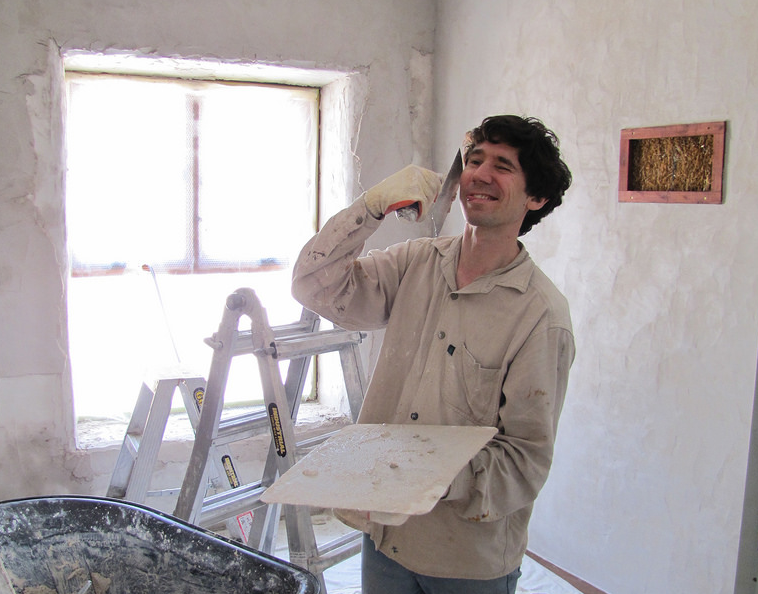Residential Plastering: Change Your Home with Knowledgeable Workmanship
Residential Plastering: Change Your Home with Knowledgeable Workmanship
Blog Article
Comprehending the Essential Methods of Plastering for Home Renovation Projects
In the world of home improvement, grasping the crucial strategies of gluing can significantly improve both the functionality and visual allure of a space. The gluing process includes crucial phases, from precise surface area preparation to the accurate application of products.
Kinds Of Plastering Methods
Although various plastering strategies exist, each serves a distinct function and supplies distinctive visual high qualities. Among one of the most usual approaches is typical lime plastering, which is recognized for its breathability and versatility. This method is particularly beneficial for older frameworks, enabling wetness to run away while keeping structural stability.
For a much more textured appearance, trowel-on plastering methods such as stucco and Venetian plaster are usually utilized. Stucco, commonly used in outsides, supplies resilience and weather resistance, while Venetian plaster is renowned for its lavish, refined finish.
Furthermore, there are much more specialized strategies, such as skimming, which is a process that includes using a slim layer of plaster over existing surfaces to create a smooth coating. Each of these techniques can drastically affect the total aesthetic and functionality of an area, making it crucial to pick the proper method based upon the specific demands of a project.

Tools and Products Needed

The hawk offers as a system to hold the plaster, while the trowels, readily available in numerous sizes, are vital for application and smoothing. A float, usually made of rubber or sponge, is made use of to accomplish an uniform finish.

Investing in top quality tools and products ultimately adds to an extra successful plastering task, yielding a resilient and visually pleasing coating. Properly equipped, you lay the foundation for efficient gluing and home renovation.
Step-by-Step Plastering Refine
With the right tools and materials in hand, the following stage entails implementing the smudging process with precision. Begin by preparing the surface to make sure ideal adhesion. Eliminate any type of loosened particles, dirt, or old plaster, and apply a bonding representative if essential.
When the surface area is prepped, blend the plaster according to the supplier's instructions, accomplishing a smooth, lump-free consistency. Making use of a trowel, use the first coat, referred to as the scratch coat, to a density of regarding 5-10 mm. Guarantee consistent insurance coverage, and utilize a comb or scratcher to create grooves for much better attachment of subsequent layers.
After allowing the scrape layer to establish partly, apply the second coat, or the brownish layer, smoothing it out for an also coating. Apply the finishing coat, which must be thinner and smoother.
When the plaster has dried out extensively, it can be fined sand lightly to remove blemishes. Adhere to up with a primer prior to painting for a sleek last appearance.
Usual Blunders to Stay Clear Of
Stopping working to identify typical errors can significantly affect the quality of your plastering job. One constant error is poor surface area prep work. Falling short to prime and clean the surface can result in bad adhesion, resulting in splits and peeling. In addition, disregarding to repair any kind of underlying problems, such as moisture or architectural damage, can jeopardize the plaster's honesty.

Timing is also critical; numerous inexperienced plasterers hurry the application. Allowing the first layer to dry entirely prior to using subsequent layers is necessary to prevent too much cracking and shrinking.
In enhancement, not making use of the right tools can prevent the finishing process. Utilizing trowels that are little or too large can affect your control and the level of smoothness of the surface.
Tips for Finishing Touches
Attaining a flawless finish in plastering needs interest to detail and a couple of tactical methods. As soon as the preliminary application has dried out, start the ending up process by making use of a wet sponge or trowel to ravel any type of imperfections. This step not just improves the surface area yet also assists to useful link remove any excess plaster that may have dried out erratically.
Next, think about making use of a fine-grit sanding block or post sander for an extra polished look. Fining sand need to be done delicately to prevent harming the underlying layer - Plastering. Always use a mask to protect versus dirt inhalation
After sanding, inspect the surface under different lighting problems to determine any kind of missed out on places or disparities. Use a slim layer of finishing plaster if essential, feathering out the sides to blend effortlessly with the bordering area.
Conclusion
In verdict, mastering necessary plastering methods considerably boosts the high quality of home enhancement tasks. Recognizing the numerous types of gluing methods, using appropriate tools and materials, and adhering to an organized application process contribute important site to achieving a sturdy and smooth coating.
In the world of home renovation, mastering the essential methods of gluing can dramatically enhance both the capability and aesthetic charm of a room.Although numerous smudging techniques exist, each offers an unique objective and supplies distinctive aesthetic qualities. Plastering. For an find here extra distinctive look, trowel-on plastering techniques such as stucco and Venetian plaster are commonly employed. Stucco, frequently used in outsides, gives longevity and weather condition resistance, while Venetian plaster is renowned for its extravagant, sleek coating
Frequently utilized plaster types include gypsum plaster, lime plaster, and cement-based plaster, each offering different objectives and atmospheres.
Report this page